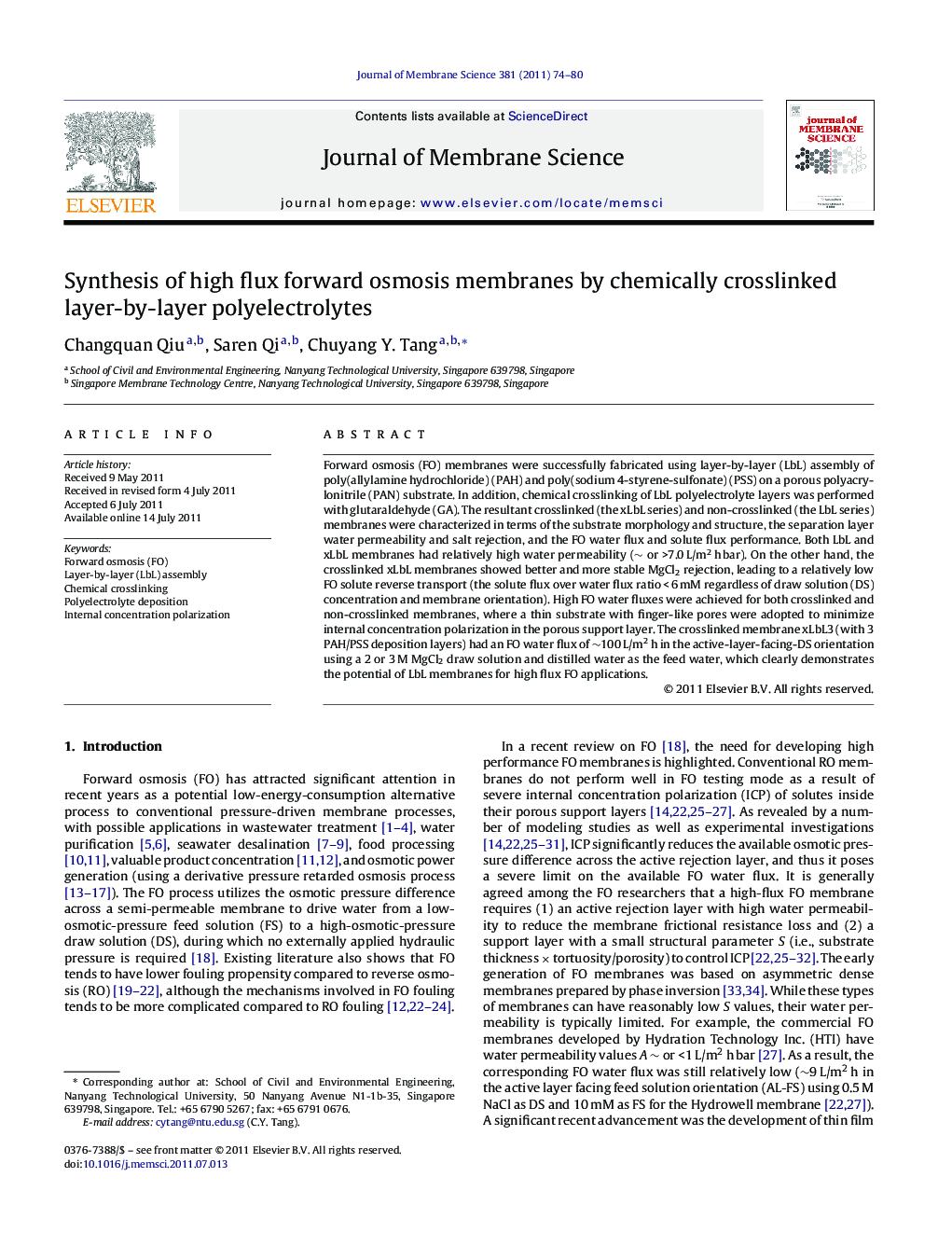| Article ID | Journal | Published Year | Pages | File Type |
|---|---|---|---|---|
| 635313 | Journal of Membrane Science | 2011 | 7 Pages |
Forward osmosis (FO) membranes were successfully fabricated using layer-by-layer (LbL) assembly of poly(allylamine hydrochloride) (PAH) and poly(sodium 4-styrene-sulfonate) (PSS) on a porous polyacrylonitrile (PAN) substrate. In addition, chemical crosslinking of LbL polyelectrolyte layers was performed with glutaraldehyde (GA). The resultant crosslinked (the xLbL series) and non-crosslinked (the LbL series) membranes were characterized in terms of the substrate morphology and structure, the separation layer water permeability and salt rejection, and the FO water flux and solute flux performance. Both LbL and xLbL membranes had relatively high water permeability (∼ or >7.0 L/m2 h bar). On the other hand, the crosslinked xLbL membranes showed better and more stable MgCl2 rejection, leading to a relatively low FO solute reverse transport (the solute flux over water flux ratio < 6 mM regardless of draw solution (DS) concentration and membrane orientation). High FO water fluxes were achieved for both crosslinked and non-crosslinked membranes, where a thin substrate with finger-like pores were adopted to minimize internal concentration polarization in the porous support layer. The crosslinked membrane xLbL3 (with 3 PAH/PSS deposition layers) had an FO water flux of ∼100 L/m2 h in the active-layer-facing-DS orientation using a 2 or 3 M MgCl2 draw solution and distilled water as the feed water, which clearly demonstrates the potential of LbL membranes for high flux FO applications.
Graphical abstractFigure optionsDownload full-size imageDownload high-quality image (129 K)Download as PowerPoint slideHighlights► Crosslinked layer-by-layer (xLbL) forward osmosis (FO) membrane were synthesized. ► xLbL membranes had high water permeability and stable MgCl2 rejection. ► xLbL membranes had relatively low solute reverse diffusion. ► xLbL membranes achieved superior FO water flux (e.g., >100 L/m2 h at 3.0 M MgCl2 draw solution).
